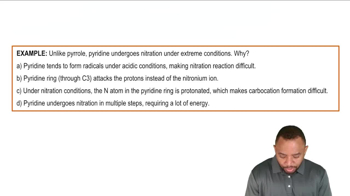Textbook Question
Show how you would convert 3-bromocyclohexanol to the following diol. You may use any additional reagents you need.

 Verified step by step guidance
Verified step by step guidance Verified video answer for a similar problem:
Verified video answer for a similar problem:



 4:34m
4:34mMaster Use of Protecting Groups with a bite sized video explanation from Johnny
Start learning